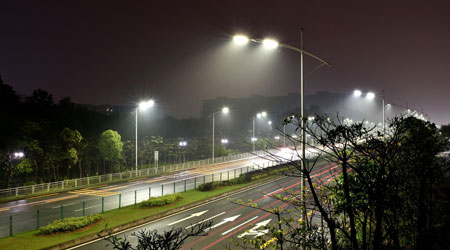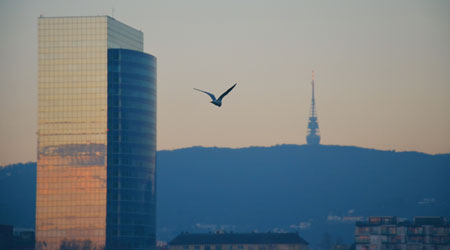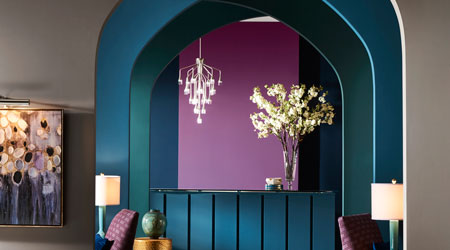
AMA: Some Street Lighting LED Options Hazardous to Health
July 5, 2016
LED lighting systems are praised by most maintenance and engineering managers in institutional and commercial facilities, mostly for the maintenance benefits and energy savings associated with the technology.
But can LEDs, when used as a street lighting application, present a health risk to humans and negatively impact the environment? Physicians at the annual meeting of the American Medical Association (AMA) in June adopted guidance for communities on selecting among LED lighting options to help minimize potential harmful human and environmental effects.
“Despite the energy efficiency benefits, some LED lights are harmful when used as street lighting,” says AMA Board Member Maya A. Babu. “The new AMA guidance encourages proper attention to optimal design and engineering features when converting to LED lighting that minimize detrimental health and environmental effects.”
Converting conventional street lighting to energy efficient LED lighting leads to cost and energy savings, and a lower reliance on fossil-based fuels. Approximately 10 percent of existing U.S. street lighting has been converted to solid state LED technology, with efforts underway to accelerate this conversion.
But the physicians also remind managers to carefully consider the products they are specifying.
According to the AMA physicians who took part in the annual meeting, high-intensity LED lighting designs emit a large amount of blue light that appears white to the naked eye and create worse nighttime glare than conventional lighting. Discomfort and disability from intense, blue-rich LED lighting can decrease visual acuity and safety, resulting in concerns and creating a road hazard.
In addition to its impact on drivers, blue-rich LED streetlights operate at a wavelength that most adversely suppresses melatonin during night. It is estimated that white LED lamps have five times greater impact on circadian sleep rhythms than conventional street lamps. Recent large surveys found that brighter nighttime lighting is associated with reduced sleep times, dissatisfaction with sleep quality, excessive sleepiness, impaired daytime functioning and obesity.
The detrimental effects of high-intensity LED lighting are not limited to humans. Excessive outdoor lighting disrupts many species that need a dark environment. For instance, poorly designed LED lighting disorients some bird, insect, turtle and fish species, and U.S. national parks have adopted optimal lighting designs and practices that minimize the effects of light pollution on the environment.
Recognizing the detrimental effects of poorly-designed, high-intensity LED lighting, the AMA encourages communities to minimize and control blue-rich environmental lighting by using the lowest emission of blue light possible to reduce glare. The AMA recommends an intensity threshold for optimal LED lighting that minimizes blue-rich light. The AMA also recommends all LED lighting should be properly shielded to minimize glare and detrimental human health and environmental effects, and consideration should be given to utilize the ability of LED lighting to be dimmed for off-peak time periods.
Click here for a CNN.com article on streetlights and LED.
Click here for more on LED technology from facilitiesnet.com
This quick read was submitted by Dave Lubach, associate editor for Facility Maintenance Decisions. Reach him at dave.lubach@tradepress.com.
Next
Read next on FacilitiesNet












